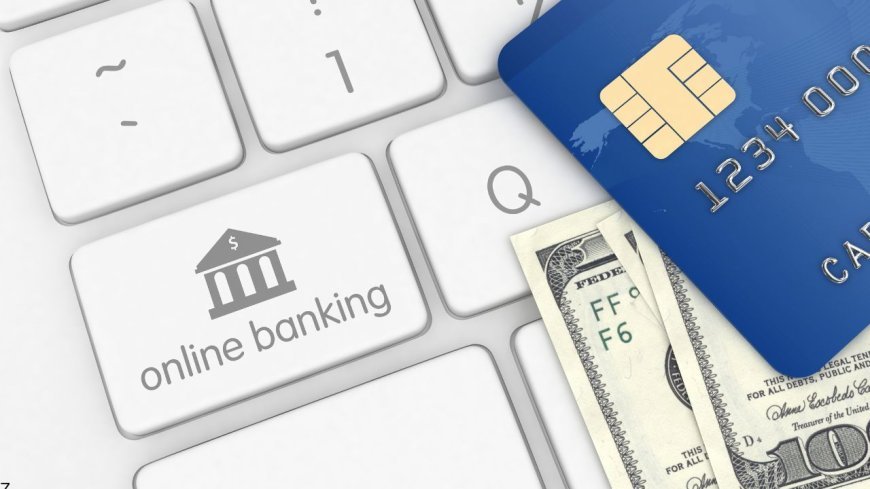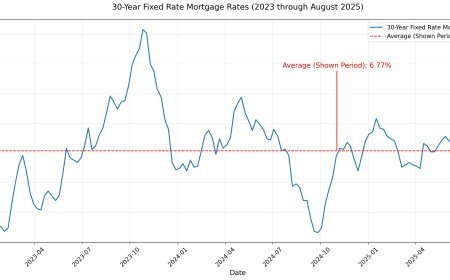Online Banking vs Traditional Banking: The Complete Security and Convenience Guide
The banking world has split into two distinct camps, and choosing sides feels like picking between convenience and security, innovation and tradition. Online banks promise higher interest rates, lower fees, and 24/7 access to your money from anywhere in the world. Traditional banks counter with physical branches, face-to-face service, and the comfort of brick-and-mortar stability that's weathered every financial storm for generations. The truth is, both approaches have evolved significantly, and the lines between them continue to blur as traditional banks enhance their digital offerings while online banks add more personal touches to their service.

In This Article:
- The Real Cost Differences: How fees, rates, and hidden charges compare between online and traditional banking.
- Security Showdown: Debunking myths about online banking safety and understanding where real risks lie.
- Service and Support Comparison: When digital chat beats face-to-face service, and when it doesn't.
- Technology and Innovation: How each banking model adapts to changing customer needs and expectations.
- Making the Right Choice for Your Lifestyle: Matching banking style to your financial habits and preferences.
The truth is, both approaches have evolved significantly, and the lines between them continue to blur as traditional banks enhance their digital offerings while online banks add more personal touches to their service. The key is understanding what each model does best and how those strengths align with your financial needs and lifestyle preferences.
The Economics of Banking Models
The fundamental difference between online and traditional banking lies in their cost structures, and these differences flow directly to customers through rates and fees. Traditional banks maintain expensive branch networks, employ large staffs, and operate complex physical infrastructure. These costs must be covered through lower deposit rates and higher fees, creating an inherent disadvantage in the rate competition.
Online banks operate with dramatically lower overhead costs by eliminating physical branches and streamlining operations through technology. Without rent, utilities, and extensive staff costs for hundreds or thousands of locations, they can pass savings to customers through higher interest rates and lower fees. This isn't just a temporary competitive advantage—it's a structural difference that's likely to persist.
The rate differences can be substantial. Online savings accounts often offer rates ten to fifty times higher than traditional bank savings accounts. For checking accounts, the gap might be smaller, but online banks frequently offer interest where traditional banks offer none. Over time, these differences compound into significant amounts, especially for customers with larger balances.
Fee structures also favor online banks in most categories. Monthly maintenance fees, overdraft charges, and ATM fees are often lower or eliminated entirely. However, some services that are free at traditional banks might carry charges at online institutions, particularly for services requiring human intervention or physical processing.
Security: Separating Fact from Fear
Security concerns represent the biggest barrier preventing many people from embracing online banking, but much of this fear is based on outdated information or misunderstanding of how modern banking security works. Both online and traditional banks use the same core security technologies and are subject to identical federal regulations and insurance protections.
FDIC insurance protects deposits up to $250,000 per depositor regardless of whether your bank operates online or through branches. The insurance doesn't distinguish between banking models—your money receives the same government backing either way. This protection covers bank failures, not fraud or theft, but it addresses the fundamental safety of your deposits.
Online banks often invest more heavily in cybersecurity than traditional banks because their entire business depends on digital security. They employ advanced encryption, multi-factor authentication, and sophisticated fraud monitoring systems. Many online banks actually have better security track records than traditional institutions that have been slower to modernize their systems.
The real security risks in banking often come from customer behavior rather than institutional vulnerabilities. Using weak passwords, banking on unsecured networks, or falling for phishing scams can compromise accounts regardless of your bank's security measures. Both online and traditional banks provide similar protections against unauthorized transactions, typically limiting customer liability to $50 or less when fraud is reported promptly.
Service Models and Customer Support
Traditional banks built their reputations on personal service and relationship banking, advantages that remain relevant for many customers. Walking into a branch, speaking with a familiar banker, and handling complex transactions face-to-face provides comfort and confidence that digital interactions can't fully replicate.
However, online banks have revolutionized customer service in ways that often exceed traditional bank offerings. Many provide 24/7 phone support, live chat, and email assistance that's available when you need it, not just during business hours. Response times are often faster, and representatives frequently have more authority to resolve issues without multiple transfers or callbacks.
The quality of online customer service has improved dramatically as these institutions have matured. Early online banks often provided poor support, but competition has forced improvements. Many now offer video calls, screen sharing, and other technologies that bridge the gap between digital and personal service.
Complex transactions still favor traditional banks in many cases. Opening business accounts, securing loans, or handling estate matters often benefit from in-person consultation and document review. However, routine banking tasks like transfers, bill payments, and account monitoring are often more convenient through online platforms.
Technology and Innovation
Online banks lead in financial technology innovation almost by definition—their entire business model depends on delivering superior digital experiences. They typically offer more advanced mobile apps, better integration with financial management tools, and faster adoption of new technologies like mobile check deposits and peer-to-peer payments.
Traditional banks have invested heavily in digital transformation, but they face challenges integrating new technologies with legacy systems built over decades. This creates a more complex, sometimes inconsistent user experience where some features work seamlessly while others feel clunky or outdated.
The innovation gap is narrowing as traditional banks modernize their systems and online banks mature their offerings. However, online banks maintain advantages in speed of implementation and willingness to experiment with new features. They can deploy updates and new services more quickly without coordinating across thousands of physical locations.
Traditional banks counter with comprehensive service ecosystems that online banks struggle to match. They offer investment services, insurance products, business banking, and lending all under one roof. This integration can provide convenience and potential relationship benefits that pure-play online banks can't replicate.
Accessibility and Convenience Factors
Online banking excels in accessibility and convenience for routine transactions. You can check balances, transfer money, pay bills, and deposit checks from anywhere at any time. This flexibility becomes particularly valuable for busy professionals, frequent travelers, or anyone who finds traditional banking hours inconvenient.
Traditional banks provide different types of convenience, particularly for services requiring physical presence. Cash deposits, notary services, safe deposit boxes, and certain loan processes still require branch visits. For customers who frequently need these services, traditional banks offer irreplaceable convenience.
ATM access represents a mixed picture. Traditional banks typically offer extensive ATM networks, but online banks have responded by reimbursing ATM fees at other institutions. This approach often provides more flexibility than traditional bank networks, though it requires more planning and record-keeping.
Geographic considerations matter significantly. Traditional banks serve customers well in their service areas but become less convenient when you move or travel frequently. Online banks provide consistent service regardless of location, making them attractive for mobile lifestyles or customers in underserved areas.
Hybrid Approaches and Future Trends
Many customers discover that using both banking models provides optimal results. They might maintain checking accounts at traditional banks for branch access and convenience while keeping savings at online banks for higher returns. This hybrid approach captures benefits from both models while mitigating their respective weaknesses.
The banking industry continues evolving toward hybrid models that combine digital efficiency with human service. Traditional banks are closing branches while improving digital offerings, while online banks are adding phone support and even limited physical presence in some markets.
Fintech companies are creating new banking models that challenge both traditional approaches. These companies often partner with established banks for regulatory compliance while focusing on user experience and specific customer segments. They represent a third option that might eventually reshape the entire industry.
Making Your Decision
Choosing between online and traditional banking depends on your priorities, habits, and comfort level with technology. If maximizing returns and minimizing fees are your primary concerns, online banks typically offer clear advantages. If you value personal relationships and branch access, traditional banks might better serve your needs.
Consider your transaction patterns, service needs, and geographic stability when making this decision. Frequent travelers and tech-savvy customers often prefer online banking, while customers with complex financial needs or strong preferences for personal service might favor traditional institutions.
Remember that this isn't necessarily a permanent decision. You can start with one approach and switch if your needs change, or use multiple institutions to optimize different aspects of your banking relationship. The key is choosing an approach that aligns with your current situation while remaining flexible as your needs evolve.
Both online and traditional banking have legitimate advantages, and the best choice depends on your individual circumstances and preferences. Understanding these differences helps you make an informed decision that optimizes your banking experience while meeting your financial goals.
What's Your Reaction?
 Like
0
Like
0
 Dislike
0
Dislike
0
 Love
0
Love
0
 Funny
0
Funny
0
 Angry
0
Angry
0
 Sad
0
Sad
0
 Wow
0
Wow
0







































